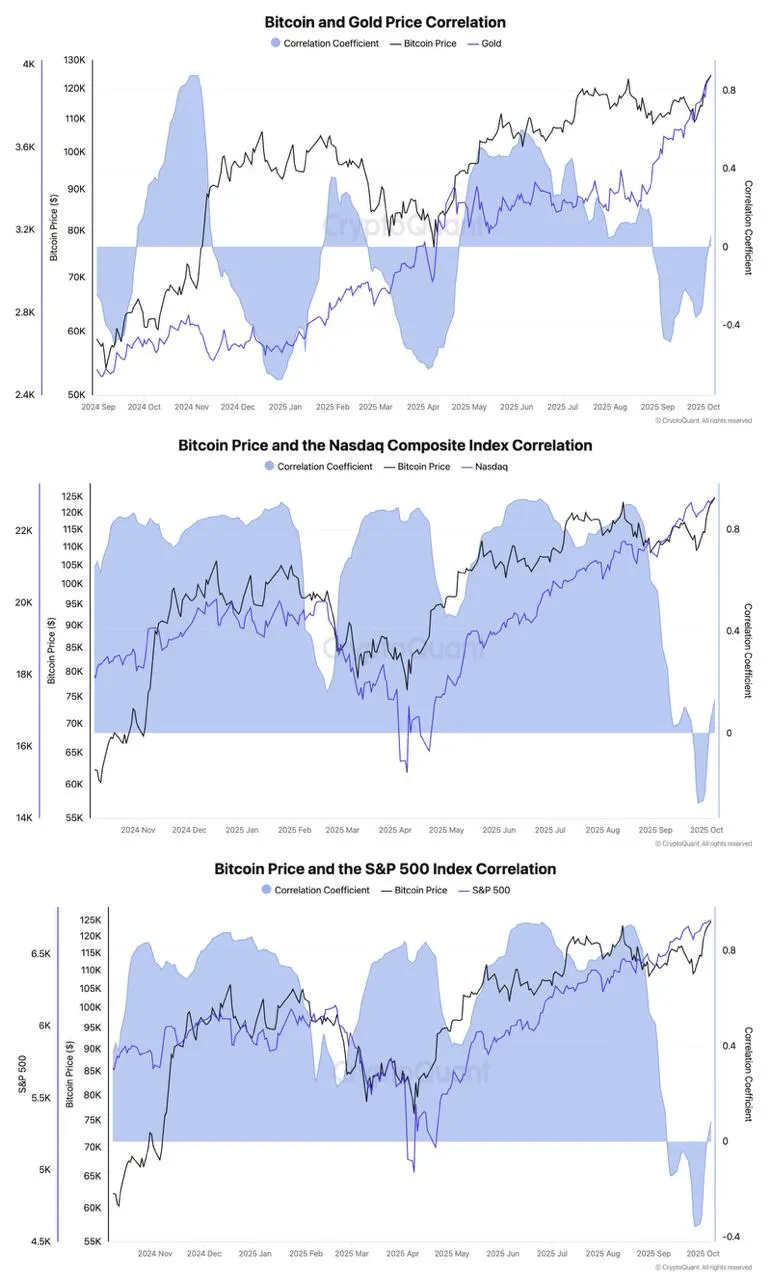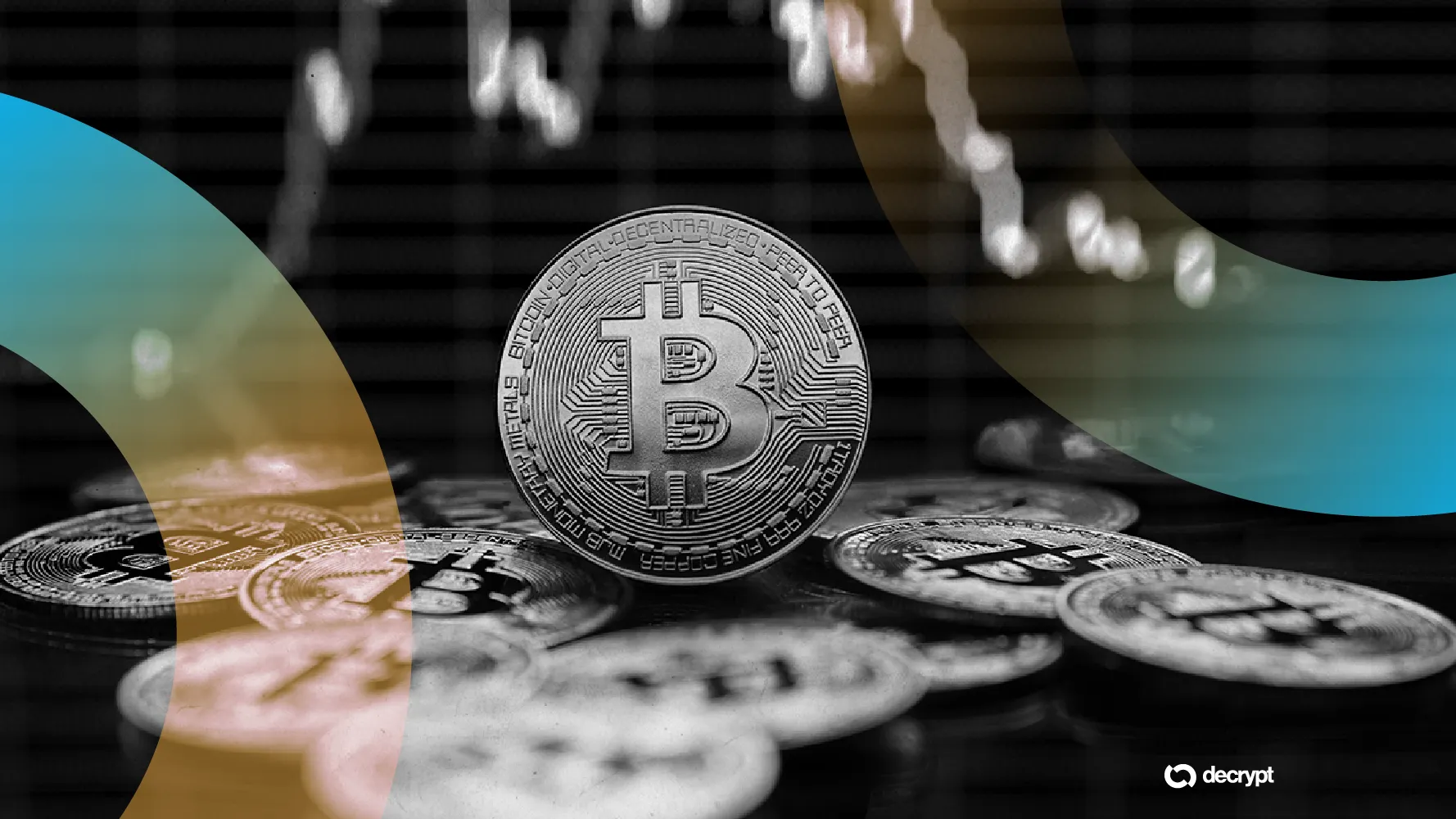In brief
- Bitcoin volatility has risen since the government shutdown began, though it remains below March's tariff-driven peak.
- The U.S. deficit has reached $1.973 trillion, $76 billion higher than last year, raising concerns about fiscal sustainability.
- Bitcoin has lagged behind stocks, gold, and silver recently, but analysts expect crypto markets to remain supported if ETF inflows stay positive.
Soaring Bitcoin, gold, and stock prices have dazzled investors, but they come with an undercurrent of short-term volatility and record highs could be distracting from the growing threat of the U.S. deficit, analysts said.
“Every shutdown, every stalemate, every borrowing debate highlights that the U.S. is living beyond its means,” Nigel Green, CEO of financial consultancy deVere, wrote in a note shared with Decrypt. “Yet investors continue to act as though record equity highs and easy liquidity make the debt irrelevant. They don’t.”
The Congressional Budget Office projected in January that the U.S. budget deficit would hit $1.9 trillion in 2025. But current Treasury Department data shows the actual deficit has reached $1.973 trillion, showing a $76 billion increase in the deficit compared to the same period the last fiscal year.
At the time of writing, Bitcoin has lost about 0.8% in the past day and is currently trading for $122,000, according to crypto price aggregator CoinGecko. Earlier this week, BTC climbed to a new all-time high above $126,000. But more recently, the S&P 500, Nasdaq 100, gold, and silver have all outperformed Bitcoin.
It’s typical for Bitcoin to lag behind stocks and precious metals, CryptoQuant Head of Research Julio Moreno told Decrypt.
“Bitcoin may catch up to these assets in the coming weeks as the correlations have now turned positive, after a month being negative,” he said. “With respect to gold, Bitcoin usually follows its movements with a lag.”

But there’s still been a spike in the Bitcoin volatility index, which tracks volatility in the price of Bitcoin in U.S. dollars by measuring the standard deviation of daily returns in 30-day windows.
The index fell to 0.88% on Sept. 28—just a few days before the U.S. government shut down on October 1. Since then, BTC volatility has steadily risen to 1.17%, according to Bitbo. That’s about the same level as one month ago and still much lower than in late March, when Bitcoin volatility spiked to 2.87% amid tariff turmoil.
“Crypto markets are likely to stay choppy, but broadly supported next week, led by Bitcoin, as long as ETF flows remain positive and no new macro shock emerges amid the ongoing U.S. government shutdown,” Bitunix analyst Dean Chen told Decrypt.
Even as Friday’s trading session is just beginning, Bitcoin ETF inflows have already pulled even with last week, according to data from London investment manager Farside Investors. As of Thursday’s close, Bitcoin ETFs had pulled in $2.7 billion worth of new funds so far this week.
Even if markets will be broadly supported next week, according to an analyst, users on Myriad—a prediction market owned by Decrypt parent company DASTAN—are expecting to see more red than green over the weekend.
Not long after the opening bell in New York Friday morning, Myriad predictors estimate that there’s a 51.2% chance that BTC sees more red than green candles between now and Monday, Oct. 12.
Analysts at crypto exchange Bitfinex were of two minds about stocks and crypto setting new high-water marks in the middle of a U.S. government shutdown.
“Equity markets trading near record highs while the shutdown persists creates a hopeful environment, suggesting that the macro backdrop remains supportive of speculative asset price appreciation,” they told Decrypt. “This could, however, be seen as a disconnect that masks growing fiscal stress, since official data on national metrics has not been released.”

